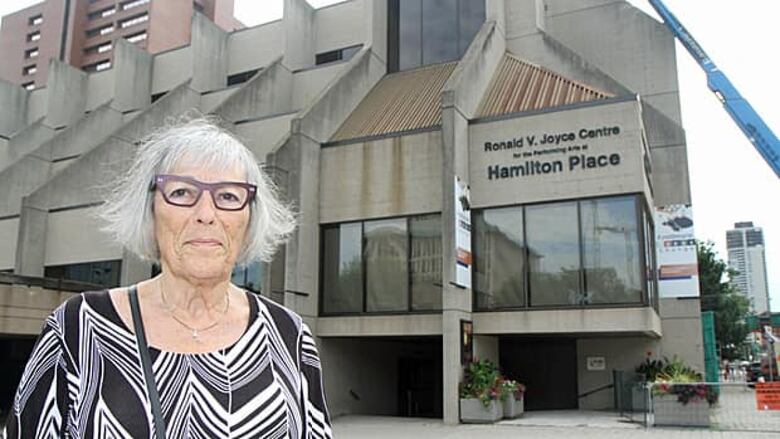Hamilton Place a unique asset in HECFI debate
Venue was never meant to be a direct money maker, former chair says

It’s a fact Marnie Paikin doesn’t want to get lost in all the debate about the Hamilton Entertainment and Convention Facilities (HECFI) — Hamilton Place was never meant to make money.
Copps Coliseum was built in part to lure an NHL team. The Hamilton Convention Centre was built to house conventions.
But Hamilton Place, the cozy mid-sized venue on Main Street West, was meant for orchestras and operas, ballet and theatre companies, she said.
A longtime community volunteer, Paikin was the first chair of the Hamilton Place board when the venue opened in 1973. It cost $10.8 million to build, money raised in part through widespread community fundraising.
Hamilton Place, she said, was meant to generate revenue in more indirect ways — through arts lovers coming downtown to park their cars and eat at restaurants before seeing a play or an orchestral performance.
In recent years, with a focus on upping appearance fees and providing a stage for more non-local acts, Hamilton Place has become "a roadhouse," she said.
"You can’t always put a price tag on what makes the city come alive," Paikin said. "If Hamilton Place, in particular, is not going to be what it was intended to be, then I think we’ve really lost something.
"I worry that it doesn’t have a champion."
Examining the options
Hamilton councillors face this conundrum and more this summer as they consider four bids to run the properties owned by HECFI, namely Hamilton Place, Copps Coliseum and the Hamilton Convention Centre.
The bids are:
- Global Spectrum/Live Nation to manage Copps Coliseum and Hamilton Place
- SMG and Forum Equity, partnered with the Hamilton-based record company Sonic Unyon, to manage all three facilities
- Carmen’s Inc. to manage the convention centre, along with a surprise plan to build a 44-storey, 440-room hotel with 150 condo units and three restaurants
- a modified version of the existing HECFI organization
Council’s stated goal is to reduce the city’s subsidy to HECFI, reducing the amount of taxpayer dollars that go into running the facilities. �
Currently, the city provides an operating subsidy of $3.2 million – about $1.4 million for the convention centre and $900,000 each for Copps Coliseum and Hamilton Place, said city treasurer Tony Tollis.
The city also subsidizes HECFI’s properties in the form of $2.5 million in utility costs, Tollis said.
'Spinning our wheels'
But the focus on money as it pertains to Hamilton Place worries Paikin.
The venue was built to house local theatre groups, Opera Hamilton and other uniquely Hamilton organizations, she said. When the motive turns to money, these local groups are priced out of the game.
With the current debate, "we seem to be spinning our wheels and losing the essence of what the thing was."
Marvin Ryder, a professor of marketing and entrepreneurship at McMaster University, agrees. He sat on the HECFI board from 1990 to 1996 and has been following the process.
Hamilton Place should have a special spot in the discussion, Ryder said.
He would like to see Global Spectrum/Live Nation take over Copps Coliseum. He would like to see Carmen’s manage the convention centre (minus the hotel, which Ryder speculates would mostly sit empty). And he would like to see Hamilton Place remain under municipal management so its integrity is preserved.
Measuring success
"People who remember when Hamilton Place was built would tell you that it was never intended to be a money-making venture in and of itself," he said.
The question, Ryder said, is how council measures a facility’s success.
"Suppose the city loses $2.8 million dollars but it brings in two million person nights," he said. "That’s people who are eating at restaurants and filling up their cars. Is that a success?
"We owe it to the people who built Hamilton Place 40 years ago to maintain some sort of artistic home so it doesn’t become, as Marnie Paikin has said, a roadhouse."
Staff is examining the bids and will present a report to council on Sept. 25, Tollis said.

